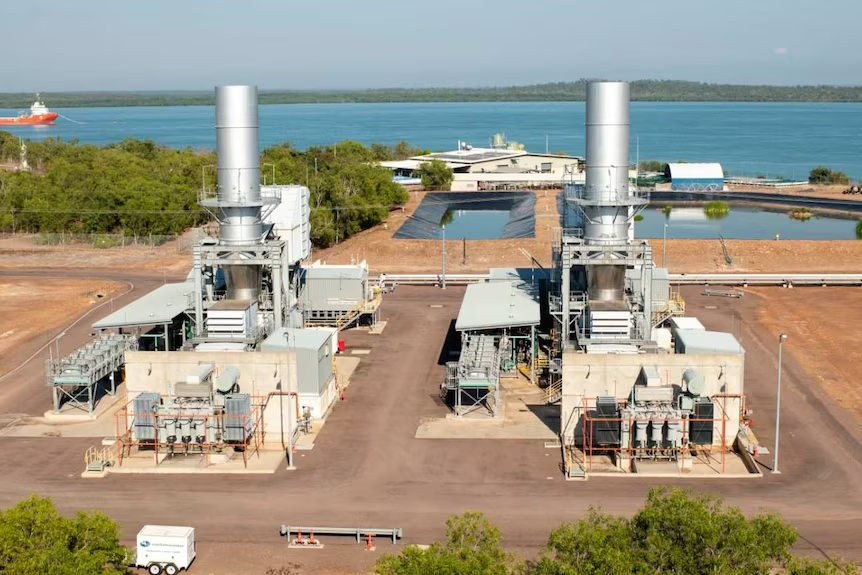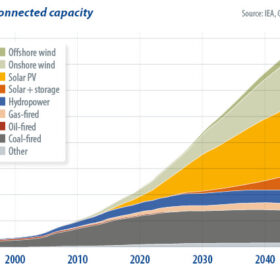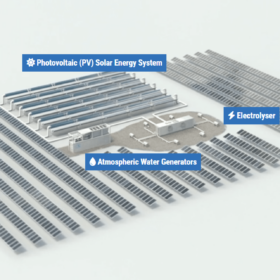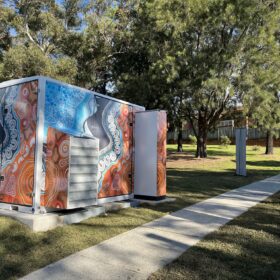Territory Generation has commenced design and engineering works to transform one of the gas turbine generators at the Channel Island power station near Darwin into a synchronous condenser to enable further uptake of renewable energy in the jurisdiction’s largest power grid.
The Northern Territory (NT) government-owned utility said the project is designed to stabilise the Darwin to Katherine interconnected system as more renewable energy is generated and deliver essential grid services such as inertia and system strength that are currently provided by existing rotating generators.
NT Essential Services Minister Kate Worden said the synchronous condenser would complement the 35 MW / 35 MWh Darwin-Katherine Battery Energy Storage System (DK BESS) and the recently announced DK BESS 2 project to increase stability of the grid.
The DK BESS, built adjacent to the Channel Island power station, is expected to be commissioned later this year.
The planned DK BESS 2 project entails large-scale batteries distributed across locations on the Darwin to Katherine electricity system. Expressions of interest for the project have been called and commissioning of the system is targeted from 2026 onwards.
“The synchronous condensers, combined with the investments we have made with the DK BESS and DK BESS 2 will stabilise the grid as we take on more renewable energy,” Worden said.
Territory Generation Chief Executive Officer Gerhard Laubscher said the turbines being replaced had been in operation for more than 40 years.
“Territory Generation is excited to repurpose an existing asset to contribute to the future energy requirements of the power system,” he said.
“The Channel Island power station synchronous condenser conversion project aligns with Territory Generation’s fleet transition plan while advancing Northern Territory government renewables and emissions objectives.”
The plans for a synchronous condenser at the Channel Island site follow the release of the annual Northern Territory Electricity Outlook Report in which the Utilities Commission said “significant” new investment is essential for a successful transition to renewable energy.
Popular content
The independent electricity regulator said the report, which provides forecasts of system demand and supply adequacy over a 10-year outlook period for the Darwin-Katherine, Alice Springs and Tennant Creek power systems, repeats previous warnings of challenges, risks, and associated opportunities related to forecast shortfalls in capacity and decreasing minimum system demand.
“These issues stem from planned generation fleet retirements and increases in behind-the-meter residential and commercial rooftop solar PV,” the report says. “These challenges and risks are now one year closer.”
The Utilities Commission said with more than 150 MW of the ageing gas generation fleet in Darwin and about 35 MW in Alice Springs expected to retire over the next three to five years, and solar generation, battery energy storage systems and electric vehicles (EV) forecast to continue increasing, “the Territory is in a prime, but precarious position.”
“Addressing the challenges and risks … will likely require a mix of new generation, battery storage, synchronous condensers, network changes, and demand-side management,” it said, warning that “without timely solutions … customer demand may not be met within four years.”
Among the challenges highlighted in the report are long lead times associated with sourcing and delivering new generation and storage assets and prolonged issues with commissioning new solar farms, “many of which are not yet fully operational or are experiencing teething issues years after installation.”
The NT government is targeting 50% of electricity generated from renewables by 2030. Data provided by the federal government shows that in 2023, just 7% of the NT’s electricity came from renewable sources.
This content is protected by copyright and may not be reused. If you want to cooperate with us and would like to reuse some of our content, please contact: editors@pv-magazine.com.









By submitting this form you agree to pv magazine using your data for the purposes of publishing your comment.
Your personal data will only be disclosed or otherwise transmitted to third parties for the purposes of spam filtering or if this is necessary for technical maintenance of the website. Any other transfer to third parties will not take place unless this is justified on the basis of applicable data protection regulations or if pv magazine is legally obliged to do so.
You may revoke this consent at any time with effect for the future, in which case your personal data will be deleted immediately. Otherwise, your data will be deleted if pv magazine has processed your request or the purpose of data storage is fulfilled.
Further information on data privacy can be found in our Data Protection Policy.